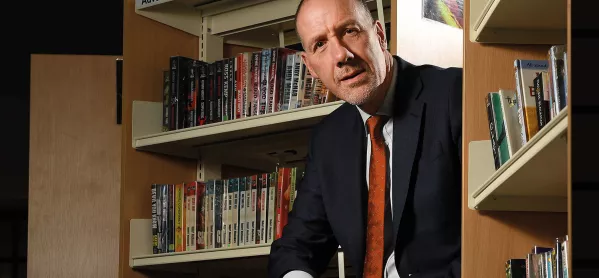- Home
- ‘The DfE’s position on funding cuts is robotically facile’
‘The DfE’s position on funding cuts is robotically facile’

When around 2,000 headteachers have to take to the streets to make their case, then the government should know it has problems.
Such a turnout means, astonishingly, that almost 10 per cent of England’s heads - uncomfortable at being away from their schools and trusts for the day - believed the only way to shake the government out of denial over the school funding crisis was to march on Downing Street.
I was proud to be with them, and all credit to West Sussex headteacher Jules White and the other organisers of this grassroots campaign.
But what an indictment of our political leaders, and how demeaning for our government, that some of our most respected public servants should have to resort to marching on the streets of Whitehall.
And what response did we get from the Department for Education? The usual one, of course, the one we always get - a statistical riposte which falls apart under any analysis.
It’s what we saw again this week. A few days ago, I joined with the general secretaries of the NAHT heads’ union and the NEU teaching union in writing to the prime minister and chancellor to voice our concerns over school funding and teachers’ pay.
The letter was published in the Daily Mirror and the DfE immediately responded with this blog in which the department repeats its refrain that it is putting record levels of funding into schools.
This follows its claim last week, in response to the headteachers’ rally, that the UK is the third highest spender on education in the world - a statement that is now reported to be under investigation by the UK Statistics Authority.
This Pavlovian response to any discussion about funding has become as irritating as it is misleading, a rhetoric woefully unmatched by reality. Let’s look at it in more detail.
The rhetoric:
There is more money going into schools than ever before, rising to a record £43.5 billion by 2020 - 50 per cent more in real terms per pupil than in 2000.
The reality:
It is true that there is more money going into schools than ever before. But this is the result of demographics rather than government largesse. Between 2010 and 2018, the number of children in primary schools increased by more than 600,000, and that bulge is now moving through into secondary education. Government spending on schools is allocated on a per-pupil basis so a rise in the pupil population must mean more spending.
In reality, total school spending per pupil fell by 8 per cent in real terms between 2009/10 and 2017/18, including a real-terms cut of more than 20 per cent to school sixth-form spending per student.
It is also true that primary and secondary school spending is 50 per cent more in real terms per pupil than in 2000. However, it is important to note that this increase took place under the previous Labour government and came to a halt in 2010, and that it followed a period in the 1990s when secondary school spending fell in real terms,
The increase in spending between 2000 and 2010 was accompanied by increasing expectations on schools. These expectations have continued to increase since 2010 despite declining budgets. And let’s note that funding for 16 to 18-year-olds has been cut much more sharply than any other phase of education.
The rhetoric:
According to the OECD, the UK is the third highest spender on education in the world.
The reality:
The BBC has already pointed out that this statement, used by the DfE in response to last week’s protest over school funding, is based on data that includes university tuition fees, private school fees, and that it’s for 2015 and not 2018.
The DfE’s statement appears to be based on OECD data which shows the total expenditure on educational institutions - from public and private sources - as a percentage of GDP.
A little further into the report there is data which does seem to show government spending on schools. The UK’s expenditure is 3.8 per cent of GDP which is above the OECD average but behind Belgium, Finland, Iceland, Israel, Norway, Costa Rica, and Brazil.
As that slightly random list suggests, perhaps we shouldn’t place too much weight on such comparisons as there are so many factors involved - the size of a country’s school-age population, the way in which education is organised and delivered, and a country’s overall GDP.
I’m afraid that the DfE’s misuse of these statistics is a sign of a department that’s out of touch on this crucial issue. It ought to be harnessing the strength of feeling from trusted professionals to make its own case to the Treasury to fund properly the education service our children and young people deserve.
Instead, we get soundbites over substance. Something as important as school and college funding shouldn’t be turned into a cat-and-mouse public relations game. It’s about the bleak dismantling of educational opportunities.
Headteachers really deserve better than the robotically facile responses they’ve had over the past week.
Geoff Barton is general secretary of the Association of School and College Leaders
Keep reading for just £1 per month
You've reached your limit of free articles this month. Subscribe for £1 per month for three months and get:
- Unlimited access to all Tes magazine content
- Exclusive subscriber-only stories
- Award-winning email newsletters



